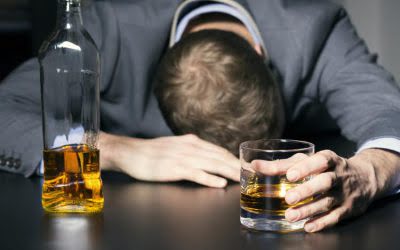60 MORE Substance Abuse Group Therapy Activities
Substance abuse treatment is a complex and multifaceted journey, and one of the most effective tools in this process is group therapy. Whether you or a loved one is seeking help, learning a few group therapy topics can help you know what it can do for you; it can be the first step towards a healthier and happier life. To find a treatment program, browse the top-rated addiction treatment facilities in each state by visiting our homepage, or https://sober-home.org/ by viewing the SAMHSA Treatment Services Locator. The helpline at AddictionResource.net is available 24/7 to discuss the treatment needs of yourself or a loved one. This helpline is answered by Ark Behavioral Health, an addiction treatment provider with treatment facilities in Massachusetts and Ohio. Rather than a one-on-one meeting with a therapist, group therapy is a gathering of several people facilitated by a clinical group leader.
- The ideas and activities for substance abuse group therapy that are used will have an impact on the benefits that our clients have.
- By participating in group therapies and activities in residential, intensive outpatient, or aftercare settings, people can find essential support for their recovery journey.
- Groups are lead by a trained group leader who prompts discussion and encourages everyone to participate.
- Talk about how differently people perceive things based on who they are and the situation at hand.
- Observing individuals in this group dynamic gives therapists a different perspective that allows them to enhance the quality of care provided for clients.
Here are 7 substance abuse group therapy activities that facilitate growth and healing. Some people from your support group in substance abuse treatment may be your support system after rehab, too. Substance abuse group activities are one of the most intimidating parts of rehab for many people. Addiction isolates you from those around you, such as friends and family, and you get used to mostly being on your own.
Role-play can be a great activity for acting out and resolving conflict in a healthy way. Members of the group can take on specific characters and role-play effective discussion, healthy ways to deal with stressful emotions, and setting boundaries. Group therapy provides a uniquely rich environment and powerful setting that can improve mental health.
A variety of group activities can be incorporated in the termination phase to assist in this process and help group members transition out of group therapy. Closing activities should highlight important aspects and reinforce any themes of the session. These activities help to unite group members and esgic dosage encourage them to work on themselves outside of the session before the next meeting. These might include inspiring quotes, small objects that symbolize strengths or accomplishments, or letters from loved ones. Members will share the jar with the group and explain the significance of the items.
Mindfulness Activities for Your Group Sessions
With a plethora of research supporting its effectiveness, Counselors can effectively use this form of treatment within an addiction treatment program to support their clients. These creative outlets can also serve as healthy coping mechanisms to practice outside of the group setting, helping people manage stress and creatively process their feelings. People experiencing substance abuse often need help managing drug or alcohol cravings and otherwise adjusting to a sober lifestyle. Group activities with peers in recovery both during and following treatment can provide support. We are dedicated to transforming the despair of addiction into a purposeful life of confidence, self-respect and happiness. We want to give recovering addicts the tools to return to the outside world completely substance-free and successful.
Topics Covered in Group Therapy for Substance Abuse
Thanks for reading this resource on 58 Substance Abuse Group Therapy Activities for Recovery. The use of group therapy activities for substance abuse can be a helpful tool in creating a safe and healthy group environment. Activities can encourage discussion when members may be reluctant or unsure of how to contribute to the conversation. Lastly, substance abuse group activities can provide group leaders with an opportunity to provide psychoeducation in an interactive way that members respond to. The program here at Two Dreams focuses on the improvement of one’s life through the achievement of mental peace, physical well-being, and personal productivity. We particularly emphasize mindfulness, the concept of intentionally paying attention, and being present in the moment with compassion, with acceptance, and without judgment.
Helpful activities for grief and loss
Group therapy topics related to resilience can encompass stress management, emotional regulation, and self-care strategies. These discussions empower individuals to face life’s challenges without turning to substances for solace. Group therapy provides a platform for individuals to share their personal triggers and learn from the triggers of others. Discussing coping strategies and creating an individualized plan for avoiding or dealing with triggers is essential in group therapy. Group therapy is a cornerstone of substance abuse treatment for several compelling reasons. It provides a supportive and empathetic environment where individuals can share their experiences, challenges, and triumphs with others on a similar path.
That’s why some recovery groups encourage members to bring candles, essential oils, and other aromatic materials. Group members can then discuss their favorite scents and the feelings they provide. Triggers are people, places, feelings, or other things that make you want to abuse drugs. Group therapy provides a cost-effective alternative to individual psychotherapy.
Engaging in art, music, or writing within a supportive group setting encourages participants to explore their thoughts and emotions. Group mindfulness practices and relaxation techniques, such as yoga or tai chi, significantly benefit people in all stages of recovery, offering a form of self-care. Recovering Champions offers 100% confidential substance abuse assessment and treatment placement tailored to your individual needs.
Mindfulness is the practice of observing the present moment without judgment. It can boost your sense of well-being and help you cope with drug cravings and other recovery-related challenges. Group therapy has a nearly 100-year-old history and has branched into many aspects of the contemporary world. As social creatures, we learn from and depend on groups to survive, thrive, and grow as individuals. Have group members collaborate and come up with a group motto based on the goals and outcome of the group sessions. Closing group therapy treatment is the phase of group development known as termination (Levine, 2011).



